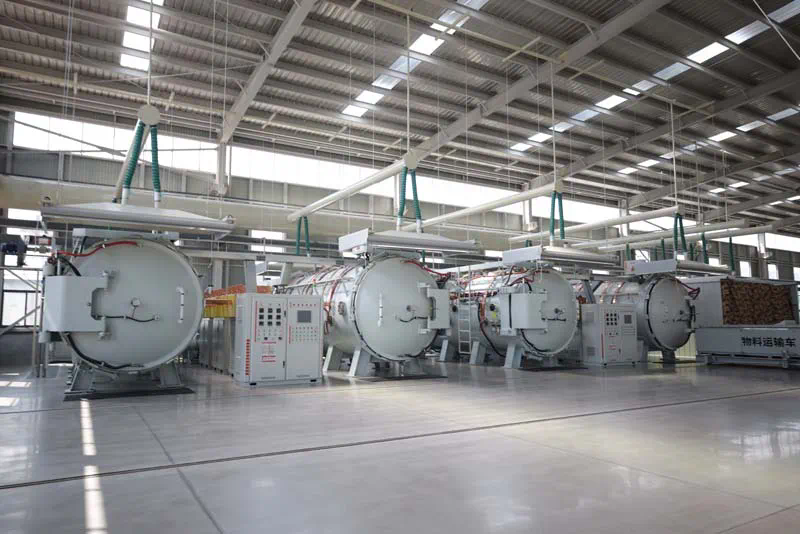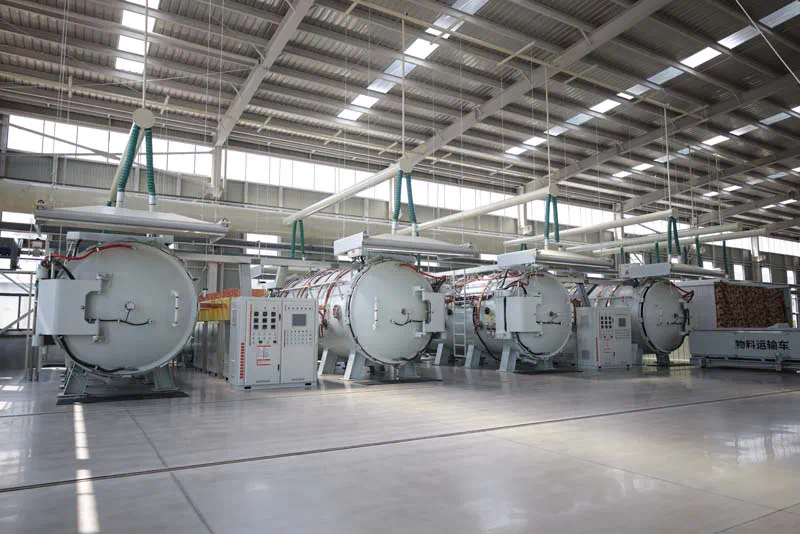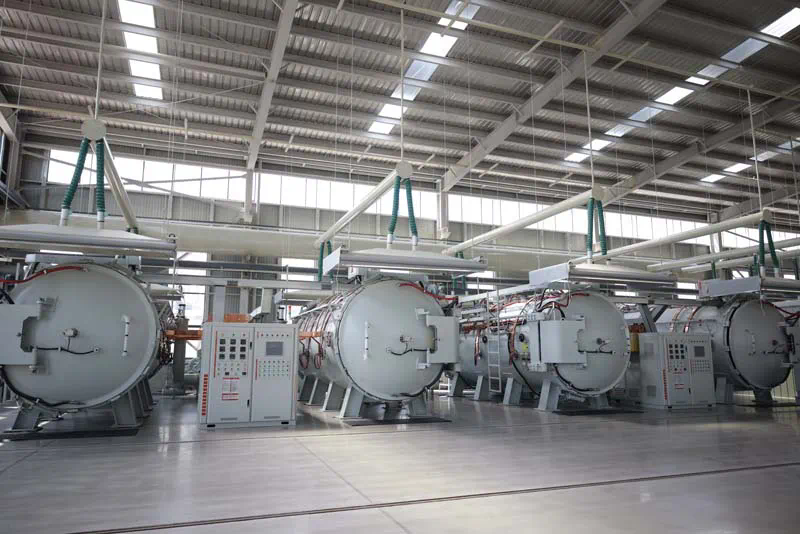Intelligent manufacturing is an internationally recognized new generation of industrial technology that realizes the transformation and upgrading of the industrial system. Intelligent manufacturing does not mean automated production, and unmanned factories, unmanned logistics, and unmanned warehousing do not represent intelligent manufacturing.
To explain clearly what intelligent manufacturing is, this article will start with the concept of intelligent manufacturing, then proceed to the goals and themes of intelligent manufacturing, and finally explain in detail how to realize intelligent manufacturing.
—01—What is smart manufacturing?
In 1989, Kusiak clearly proposed the term “intelligent manufacturing system” for the first time and defined intelligent manufacturing as “modeling the skills and expert knowledge of manufacturing technicians by integrating knowledge engineering, manufacturing software systems and robot control to make intelligent The machine can autonomously produce small batches.” At this time, the concept of intelligent manufacturing is mainly explained from the technical aspect, emphasizing that it is a human-machine integrated intelligent system composed of intelligent machines and human experts.
However, in the strategic research report on my country’s manufacturing power in the 21st century, it is believed that intelligent manufacturing is the integration of manufacturing technology, digital technology, intelligent technology and new generation information technology. It is a manufacturing system with information perception, optimized decision-making, and execution control functions for the entire product life cycle. It is designed to manufacture products and serve users efficiently, with high quality, flexibility, cleanness, safety, and agility. The contents of intelligent manufacturing include: intelligence of manufacturing equipment, intelligence of design process, optimization of processing technology, informatization of management, agility and remote service, etc.
Now, we have a further understanding of the connotation of intelligent manufacturing in the Industry 4.0 era, that is: intelligent manufacturing is a new production method and manufacturing technology formed by the deep integration of advanced manufacturing technology with new generation information technology, new generation artificial intelligence and other new technologies. .
It takes the digital, networked and intelligent integration of the product’s full life cycle value chain as the core, is supported by the vertical management and control integration within the enterprise and the collaborative integration of the enterprise’s external network, and is based on the physical production system and its corresponding digital twin mapping and integration at all levels. As a basis, a smart factory with dynamic perception, real-time analysis, independent decision-making and precise execution functions is established to carry out intelligent production integrating cyber-physics to achieve efficient, high-quality, low-consumption, green and safe manufacturing and services.
—02—The overall goal of developing intelligent manufacturing
As we all know, Industry 4.0 is a new industrial revolution that is taking place and is facing a series of changes and challenges. “Intelligence” is an inevitable trend in the development of manufacturing technology in the future, and intelligent manufacturing is its core. In the era of Industry 4.0, the overall goals of intelligent manufacturing can be summarized into the following five aspects:
(1)High quality
The manufactured products have excellent quality that meets the design requirements, or provide excellent manufacturing services, or optimize the quality of manufactured products and manufacturing services.
(2) Efficient
On the premise of ensuring quality, we complete production in the shortest possible time with efficient work rhythm, thereby manufacturing products and providing manufacturing services to quickly respond to market demand.
(3) Low consumption
Manufacture products or provide manufacturing services at the lowest economic cost and resource consumption. The goal is to minimize the overall manufacturing cost or optimize the manufacturing energy efficiency ratio.
(4) green
Environmental impact and resource efficiency are comprehensively considered in manufacturing activities. The goal is to minimize the impact on the environment and maximize resource utilization throughout the entire product life cycle, and to coordinate and optimize the economic and social benefits of the enterprise.
(5)Safety
Consider the network security and information security issues involved in manufacturing systems and manufacturing processes, that is, through comprehensive security protection measures and technologies to ensure the security of equipment, networks, controls, data and applications.
—03—Core theme of intelligent manufacturing
1. Smart factory
Smart factories focus on the study of intelligent production systems and processes, as well as the realization of networked distributed production facilities. Smart factory is a key topic in smart manufacturing, and its main content can be described from multiple perspectives.
First of all, the digital factory is an application manifestation of the integration of industrialization and informatization. It relies on information and digital technology to provide comprehensive management and control solutions for the entire production process of manufacturing plants through integration, simulation, analysis, control and other means. It is not limited to virtual factories, but more importantly, the integration of actual factories, including product engineering, factory design and optimization, workshop equipment construction, and production operation control.
Secondly, the digital interconnected factory refers to the comprehensive application of Internet of Things technology to all aspects of factory operations to achieve ubiquitous perception and interconnection of people, machines, materials, methods, environment, and measurements within the factory. The scope of interconnection can even extend to the supply chain. and customer links.
From a paradigm perspective, smart factories are the deep integration of informatization and industrialization at the manufacturing factory level, and are the extension and development of digital factories, networked interconnected factories and automated factories. By applying artificial intelligence technology to product design, technology, production and other processes, it enables manufacturing plants to embody certain intelligent characteristics in their key links or processes, that is, autonomous perception, learning, analysis, prediction, decision-making, Communication and coordination control capabilities can dynamically adapt to changes in the manufacturing environment, thereby achieving the goals of improving quality and efficiency, saving energy and reducing costs.
2. Intelligent production
Smart production is another key theme in smart manufacturing. In future intelligent production, production resources (production equipment, robots, conveyors, warehousing systems and production facilities, etc.) will be integrated to form a closed-loop network with characteristics such as autonomy, self-adaptation, and self-reconfiguration, allowing rapid response, Dynamically adjust and configure manufacturing resource networks and production steps. The research contents of intelligent production mainly include:
(1) MOM production network
Based on the production network of the manufacturing operation management system, suppliers in the production value chain can obtain and exchange production information through the production network. All parts provided by suppliers can arrive at the production line in the right order at the right time through the intelligent logistics system.
(2) Production process design, simulation and optimization based on digital twins
Through digital twins, the production modeling and simulation in the virtual space is perfectly integrated with the actual production process in the real world, thereby establishing a highly realistic simulation of objects in the real world (including materials, products, equipment, production processes, factories, etc.) “Digital Twin”, every step of the production process will be designed, simulated and optimized in a virtual environment (i.e. cyber system).
(3) Decision-making and execution based on on-site dynamic data
Use the digital twin model to establish a highly realistic simulation “twin” for materials, products, factories, etc. in the real physical world. Driven by on-site dynamic data, the customized information, production process or production process can be simulated and optimized in the virtual space. , issue optimized production process instructions to actual production systems and equipment, command and control equipment, production lines or production processes to perform autonomous and self-organized production execution to meet users’ personalized customization needs.
3. Intelligent logistics and intelligent services
Smart logistics and smart services are also one of the themes of smart manufacturing respectively. On some occasions, these two are often considered to be important components of smart factories and smart production.
Intelligent logistics mainly integrates logistics resources through the Internet, Internet of Things, and logistics networks, giving full play to the efficiency of existing logistics resource suppliers, so that demanders can quickly obtain service matching and logistics support. Intelligent services refer to services that can automatically identify users’ explicit and implicit needs and meet their needs proactively, efficiently, safely and greenly.
In intelligent manufacturing, intelligent services need to innovate service models and business models based on the integration of existing information technologies and their applications, focusing on user needs. Therefore, the realization of intelligent services requires cross-platform and diversified technical support. In smart factories, based on the CPS platform, through the Internet of Things (Internet of Things) and the Internet of Things (Internet of Services), smart grids, smart mobility, smart logistics, smart buildings, smart products, etc. are integrated with smart factories (smart workshops and smart manufacturing processes). etc.) are interconnected and integrated to achieve control over the supply chain, manufacturing resources, production facilities, production systems and processes, marketing and after-sales, etc.
—04—How to realize intelligent manufacturing?
For different industries, different fields, or different enterprises, the specific implementation of intelligent manufacturing will have different technical routes and solutions. Therefore, what we are discussing today about how to realize intelligent manufacturing is only a basic logic and route, and different industries still need to change according to actual conditions.
1. Requirements analysis
Requirements analysis refers to the investigation and analysis of actual user needs before system design and during the design and development process. It is the basis for system design, system improvement and system maintenance.
Demand analysis mainly involves the following contents: development trends, existing foundations, problems and gaps, target positioning, etc.
2. Network infrastructure construction
Network interconnection is the basis of networking. It mainly realizes the interconnection and interoperability between various equipment and systems of the enterprise, including intra-factory network, extra-factory network, industrial equipment and product networking, network equipment, network resource management, etc. involving field level and workshop level. , the interconnection between enterprise-level equipment and systems, that is, vertically integrated networked manufacturing within the enterprise; it also involves different interconnection scenarios between enterprise information systems, products, users and cloud platforms, that is, horizontal integration outside the enterprise (between different enterprises) integrated.
Therefore, network interconnection provides network interconnection infrastructure and technical support for vertical integration within the enterprise and horizontal integration outside the enterprise. Network security and information security issues must also be considered in network interconnection infrastructure construction, that is, comprehensive security protection measures and technologies must be used to ensure the security of equipment, networks, controls, data, and applications.
3. Digitization of data interconnection and visualization
Based on product life cycle digital management (PLM), the digitization of the product’s entire value chain, manufacturing process data acquisition, and product and production process data visualization are the first steps in intelligence to achieve digitalization and data visualization. The main contents include: digitization of the product life cycle value chain, interconnected sharing of data, data visualization and display.
Yixin ABI, a one-stop data analysis platform independently developed by Yixin Huachen, can help manufacturing companies conduct comprehensive analysis and display in terms of display projects, scientific research investment ratios, product monitoring, personnel composition, etc., and always control the company’s operating status and the costs of each project. situation, and comprehensively supervise the follow-up of each project; in addition, the wear rate of each production line is accurately monitored to eliminate potential faults in a timely manner. It provides a data basis for the operation and maintenance management of manufacturing enterprises and assists leaders in making efficient decisions.
4. On-site data-driven dynamic optimization
On-site data-driven dynamic optimization is essentially based on the vertical integration of “physical layer equipment – workshop manufacturing execution system – enterprise resource management information system” within the factory. Through on-site data collection of physical equipment, controllers and sensors, we obtain a comprehensive understanding of production. Aware of the status of the process and production environment, perform data modeling analysis and simulation to dynamically optimize the production operation process, make the best decisions, and accurately execute them through corresponding industrial software and control systems to complete closed-loop control of the production process.
Yixin Huachen’s smart factory solution can help manufacturing companies build smart factory production lines with the help of 5G network, intelligent robots, and video comparison technology. The use of visualization technology in key links such as parts distribution, inventory management, production assembly, and information reporting can effectively adjust production progress, rationally allocate resources, monitor production quality, and report data feedback results in a timely manner. In addition, the program content covers the tire testing process in the production workshop, T-BOX data uploading process, real-time inventory monitoring, and visual monitoring of the working status and equipment status of cloud printing equipment and AGV intelligent robots.
5. Intelligent production with virtual and real integration
Intelligent production with virtual and real integration is an advanced stage of intelligent manufacturing. This stage will further establish the integration of products, manufacturing equipment and processes based on the realization of three major integrations: end-to-end digital integration of the product’s full life cycle value chain, vertical management and control integration and networked manufacturing within the enterprise, and networked collaboration outside the enterprise. Physical objects at different levels such as processes, production lines, workshops, factories and enterprises are mapped and integrated into digital twins, and a smart factory with CPS as the core is built to fully realize functions such as dynamic perception, real-time analysis, independent decision-making and precise execution, and conduct cyber Physically integrated intelligent production enables efficient, high-quality, low-consumption, and green manufacturing and services.
Yixin Huachen Intelligent Workshop Solution uses a three-dimensional simulation of the real production environment to comprehensively monitor factory surveillance, production safety, transportation vehicles and other areas. It can help manufacturing companies control the production and transportation status of the company at all times, and comprehensively supervise the operation of each production workshop. Nip all risks in the cradle and provide clairvoyance and ears for creating high-quality workshop production.
—05—Summary
In order to adapt to the changes in manufacturing technology and the needs of new challenges in the manufacturing industry, intelligent manufacturing is the only way for the development of the manufacturing industry. Intelligent manufacturing is a multi-faceted, multi-level, multi-effect set that requires the transformation and upgrading of software, hardware, talents, management and other aspects. It requires manufacturing companies to be armed from their “brains” to their “limbs” in order to succeed in Industry 4.0. Gained the upper hand in the second half.


